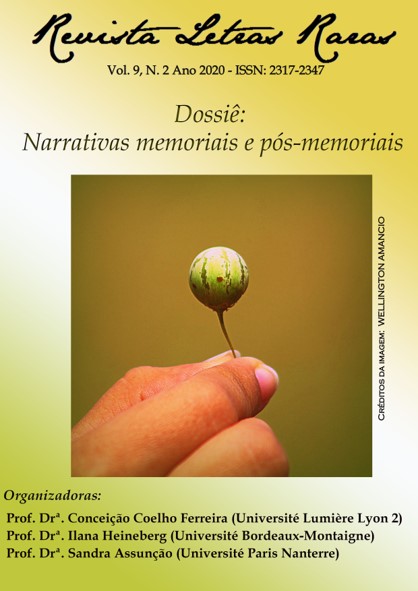A toponímia indígena artificial no Brasil: uma classificação dos nomes de origem tupi criados nos séculos XIX e XX
Palabras clave:
Toponímia Artificial, Tupi Antigo, Línguas GeraisResumen
DOI: https://dx.doi.org/10.35572/rlr.v9i2.1700
No território brasileiro encontram-se topônimos de origem indígena de mais de quinhentos anos de existência,
atribuídos pelos próprios índios do passado, talvez até antes do Descobrimento do Brasil, ao lado de nomes
indígenas artificiais que têm poucas décadas de existência. Tais nomes surgiram a partir da segunda metade do
século XIX e sua criação tornou-se muito comum até os anos 50 do século XX. Esses topônimos artificiais são,
muitas vezes, confundidos com os topônimos espontâneos de origem indígena, que são principalmente
provenientes do tupi antigo e das línguas gerais dele originadas, ou seja, a língua geral meridional (ou paulista), a
língua geral amazônica e o nheengatu. As razões históricas para a ocorrência de tal fenômeno foram o
fortalecimento dos nacionalismos políticos no século passado, com reflexos no Brasil, o advento do Modernismo,
com profundos efeitos sobre a cultura ocidental em geral e sobre a cultura brasileira, em particular. Este artigo
analisa tal toponímia artificial, fazendo uma tentativa de sua classificação.
Descargas
Citas
ANÔNIMO (1795), Diccionario Portuguez e Brasiliano (ou O Diccionario Anonymo da Lingua Geral do Brasil), publicado de novo com seu reverso por Julio Platzmann. Edição facsimilar. Leipzig: b. G. Teubner, 1896.
DAUZAT, A., Les noms de lieux. Paris: Librairie Delagrave, 1937.
IBGE CIDADES: www.cidade.ibge.gov.br
NAVARRO, E. A., Dicionário de tupi antigo – A Língua Indígena Clássica do Brasil. São Paulo: Global Editora, 2015.
SAMPAIO, T. [1901], O tupi na geografia nacional. São Paulo: Companhia Editora Nacional, 1987.
STRADELLI, E., Vocabulários de língua-geral português-nheengatu e nheengatu-português. Revista do Instituto Histórico e Geográfico Brasileiro, Rio de Janeiro, vol. 158, pp. 11-722, 1929.
Publicado
Cómo citar
Número
Sección
Licencia
Derechos de autor 2023 Revista Letras Raras

Esta obra está bajo una licencia internacional Creative Commons Atribución-NoComercial 4.0.








